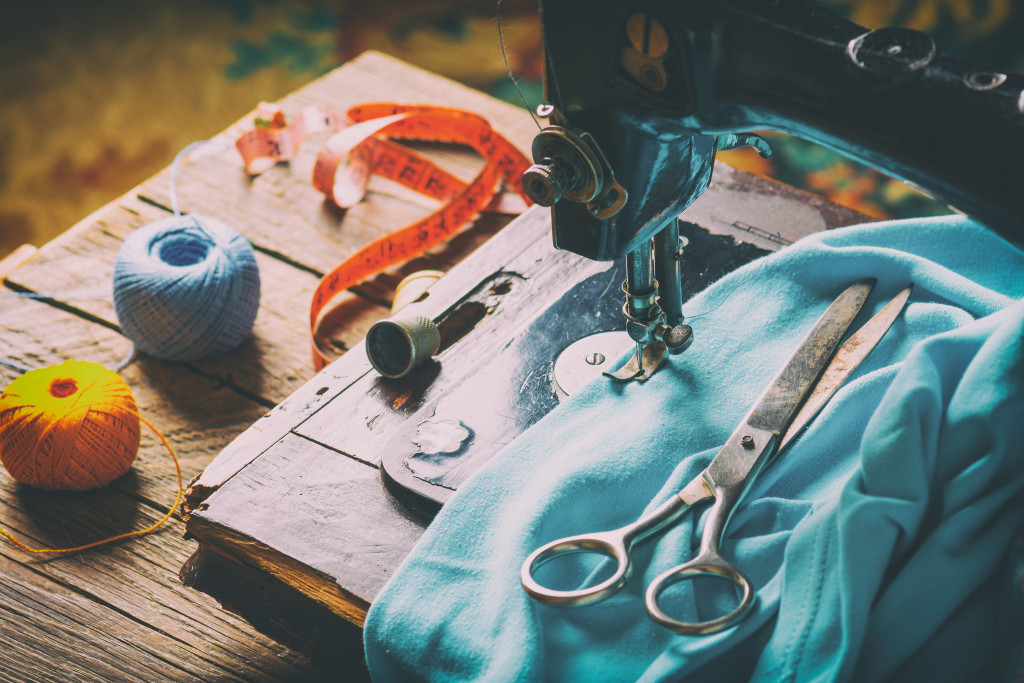There’s something so satisfying about taking an old, tattered piece of clothing and restoring it to its former glory. It saves you money from buying new clothes and gives you a sense of pride, knowing that you created something beautiful from what may have been considered trash. If you’re new to the world of clothes restoration, never fear! This blog post will give you four easy ways to get started.
Sewing on a New Button
This is the simplest way to restore a piece of clothing, and it can make all the difference in the world. Whether you’re dealing with a coat, shirt, or pants, sewing a new button onto clothing is a fairly easy task that anyone can do. Plus, it only requires a few supplies you likely already have around the house.
You only need a needle, thread, scissors, and the new button. Cut off the old button with the scissors, thread your needle, and sew the new button using a strong knot. To give it a new twist, you can also opt for a decorative or colorful button instead of one that matches the original design. Try mixing and matching different buttons to give it a unique look.
You can also try adding buttons to clothing that didn’t originally have them. For example, placing a few buttons on the side of a shirt or dress can give it an entirely new look. You can also add button details to the sleeves or collar to give it an updated style. This way, you can instantly transform your clothing without major alterations.
Dyeing and Printing
If you have a piece of clothing still in relatively good condition but has lost its color due to age or wear and tear, then dyeing it might be the best option. All you need is some fabric dye and a bucket of hot water. Make sure to follow the instructions on the fabric dye package, as different fabrics require different dyes. Tie-dyed shirts were popularized in the 90s and are making a comeback today, so it is worth giving a shot.
You can also opt for printing instead of dyeing for even more creative freedom. You can use stencils, stamps, or other tools to create unique patterns and designs on your clothing. You can even use bleach or other specialty products to achieve different effects. Remember to be careful when working with bleach, as it can damage clothing if not used properly.

Darning a Hole in Socks
Another easy way to restore clothing is by darning holes in socks. This is a fairly simple task but requires time and patience. First, you’ll need to gather supplies: a needle, thread, fabric glue (optional), and scissors. Cut off loose threads around the hole using the scissors, and then thread your needle. When the needle is threaded, start at the bottom and work in a criss-cross pattern until the hole is filled. You can use fabric glue to secure the stitches in place if desired. And that’s it! Your socks are now as good as new.
Darning can give your socks a unique texture and look, so don’t be afraid to experiment with colors and patterns. You can use different colored threads to create a fun and eye-catching design. For example, try using contrasting colors in your stitches to create a zigzag pattern across the top of your socks. You can also use a variety of thread textures like yarn, embroidery floss, or even twine to create a unique look.
Restoring Stained Clothing
Stains are inevitable when it comes to clothes, but that doesn’t mean they’re always permanent! There are several ways to remove stains from clothing, but one of the most effective (and cheapest) ways is by using vinegar. Mix vinegar and water in a bowl and apply the solution to the stained area using a cloth or brush.
Rub the solution into the stain until it disappears, then rinse with cold water. Repeat this process as necessary until the stain is completely gone. You can also add salt to the vinegar mixture for particularly stubborn stains. And there you have it—clothing that looks good as new! You can use vinegar to remove oil stains, blood, sweat, and even ink.
Aside from vinegar, you can also use baking soda, lemon juice, dish soap, and hydrogen peroxide to restore stained clothing. Experiment with different methods until you find one that works best for your particular stain. You can always take the stain to a dry cleaner for professional treatment if the stain is stubborn.
Restoring old clothes is not only satisfying, but it’s also environmentally friendly and cost-effective. So before you toss out that piece of clothing with a small hole or stain, try restoring it using one of these simple methods! You may be surprised at how easy it is—and how much money you’ll save in the long run.





